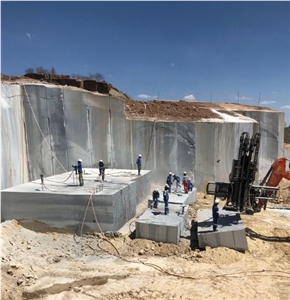Unveiling the Mysteries of Granite Quarrying: Where Toughness and Elegance Meet
The world of granite quarrying is a world where the raw stamina of nature assembles with human creativity to develop structures that stand the examination of time with an air of beauty. From the midsts of quarries to the meticulous sprucing up in workshops, the process of transforming granite right into architectural wonders is an intricate dance of custom and innovation. As we peer into the midsts of this old craft, we start to discover the covert ins and outs that shape the extremely essence of our developed setting.
The Origins of Granite Quarrying
In the record of building background, the origins of granite quarrying are shrouded in a tapestry of old craftsmanship and geological wonders. Going back to ancient Egypt and Mesopotamia, the extraction of granite from quarries marked the beginning of a journey that would at some point lead to the creation of several of the world's most iconic frameworks.
Granite quarrying's roots can be traced to the knowledgeable craftsmens who identified the rock's toughness and aesthetic appeal. With a mix of primitive tools and large determination, these early quarry workers uncovered granite blocks that would end up being the structure blocks of people.
As worlds advanced, so did the methods of quarrying granite. The Romans, renowned for their engineering expertise, developed advanced techniques for drawing out granite to build monoliths, temples, and roads that stood the test of time.
The tradition of these old quarrying methods remains to shape modern-day style, with granite remaining a sign of toughness and style in construction projects around the world. (granite quarries in south africa)
Tools of the Quarrying Profession
The development of granite quarrying techniques from old civilizations to modern times highlights the vital role played by the devices of the quarrying profession in forming the industry's practices. In old times, quarrying tools were primary, commonly including chisels, hammers, and wedges made from products like bronze or iron. These tools required significant manpower and time to extract granite obstructs from quarries.

Furthermore, the intro of pneumatically-driven tools and high-powered machinery has substantially reduced the physical labor required in quarrying procedures, improving worker security and performance. As the quarrying sector remains to introduce, the tools of the profession continue to be at the center of driving progression and shaping the future of granite extraction.
Removing Blocks of Granite
Utilizing precision equipment and advanced strategies, the removal of granite blocks from quarries has actually come to be an innovative process in the modern-day quarrying market. Regulated blasting strategies are then used to break apart the granite right into manageable sections.

Polishing and Completing Strategies
To achieve a flawless surface area on granite blocks, skilled artisans use a collection of meticulous polishing and finishing techniques. After the preliminary removal and forming procedures, the granite blocks go through a detailed polishing phase to enhance their all-natural beauty and resilience. One common approach utilized in polishing granite is diamond abrasion, where industrial diamonds are used to grind and polish the stone to a smooth finish. This process not only creates a lustrous surface area but additionally guarantees harmony in shade and texture across the granite block.
Along with sprucing up, completing techniques are used to more refine the granite's appearance. have a peek here These methods might include flaming, refining, or brushing, each offering unique structures and surfaces to fit various visual preferences. Flaming, for example, entails subjecting the granite surface area to high temperatures to develop a harsh, distinctive coating, perfect for exterior applications where slip-resistance is crucial. Developing, on the other hand, gives a matte finish that is smooth to the touch, best for interior kitchen counters and floor covering. By carefully choosing and applying these brightening and completing methods, craftsmens can change raw granite blocks right into beautiful pieces that showcase both stamina and style.

Environmental Impact and Sustainability
With the growing focus on ecological awareness in the market, granite quarrying techniques are significantly looked at for their influence on all-natural sources and long-term sustainability. Furthermore, the transport of granite from quarries to refining centers creates carbon exhausts, further contributing to environmental degradation.
To mitigate these impacts and guarantee sustainability in granite quarrying, market stakeholders are embracing different steps. Implementing innovative technologies to decrease power intake and water use, recovering quarried land for environmental repair, and advertising responsible sourcing techniques are some approaches being employed. Qualifications such as the Forest Stewardship Council (FSC) and the Leadership in Power and Environmental Design (LEED) aid consumers recognize ecologically friendly granite items.
Verdict
Finally, granite quarrying is a procedure that needs specialized tools and strategies to extract blocks of granite and polish them to a high degree of surface. While the environmental influence of quarrying can be significant, initiatives are being made to enhance sustainability techniques in the market. Generally, granite quarrying is a delicate balance in between using the stamina and style of this natural stone Learn More while reducing its impact on the atmosphere.